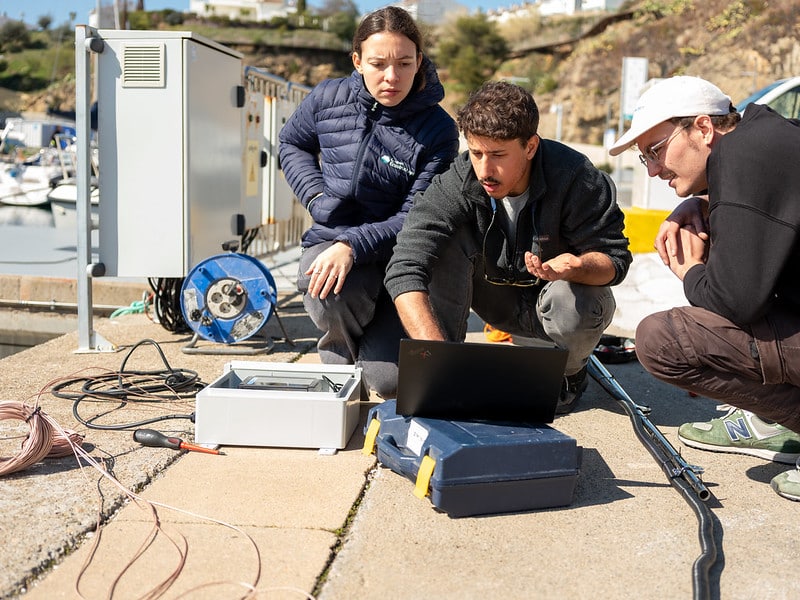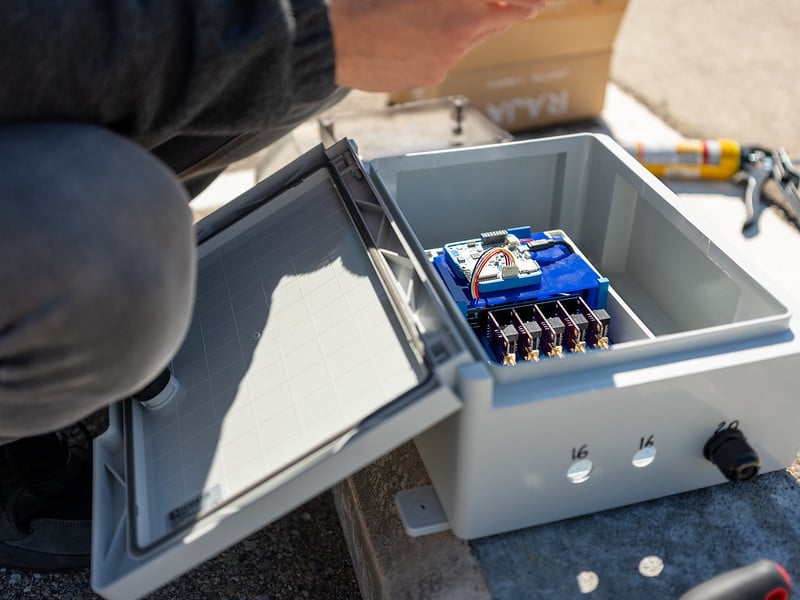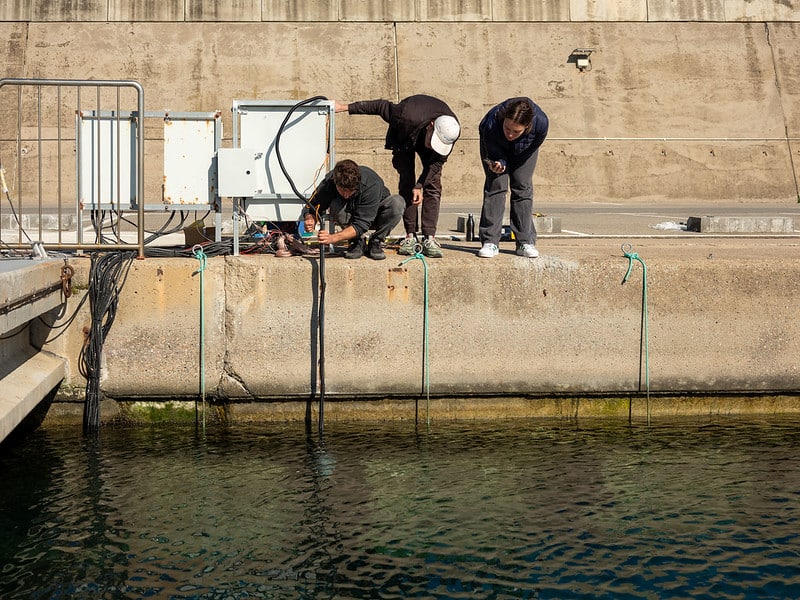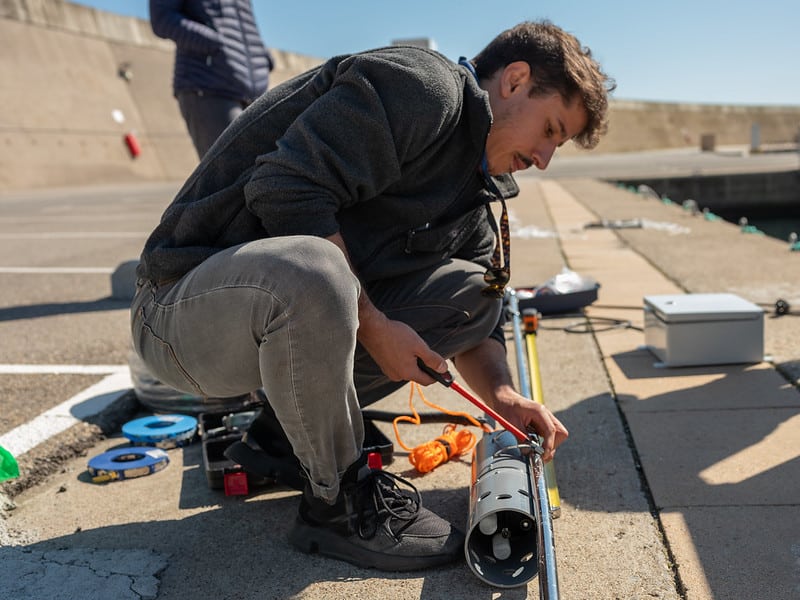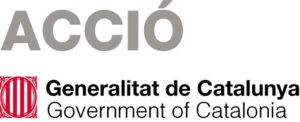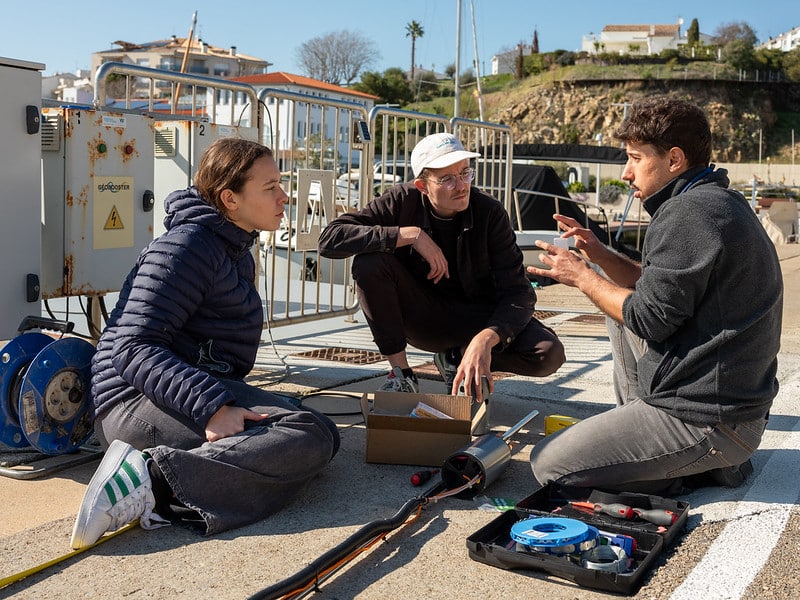
Aquatic Sensing for Marine Regeneration
Using low-cost environmental sensing to support marine biodiversity restoration
Area
Sense Making
Type of Project
Providing tailored sensor solutions for professionals and researchers
The Goal
Ocean Ecostructures is on a mission to regenerate degraded marine ecosystems through their BioBoosting System (BBS), a nature-based technology that transforms artificial infrastructures into active agents of marine biodiversity. However, continuous and autonomous monitoring of underwater environmental conditions remains a technical bottleneck.
The company needed a low-cost, reliable solution to monitor critical water quality parameters—such as pH, temperature, turbidity, dissolved oxygen, and pressure—at depths of up to 15 meters. This capability would enable them to track the effectiveness of their interventions, detect invasive species, and collect long-term environmental data to support emerging ecosystem services.
Our Solution
With the support of ACCIÓ‘s “Cupons Indústria 4.0” programme for technological implementation, Ocean Ecostructures partnered with Fab Lab Barcelona and the Institute for Advanced Architecture of Catalonia (IAAC) to co-develop a custom aquatic sensing station using Smart Citizen open-source technology.
The station is designed to autonomously collect, transmit and visualise environmental data, strengthening the company’s capacity to assess impact and ensure the long-term sustainability of marine restoration initiatives.
1. Design & Development
We began by jointly defining the functional and technical requirements of the device. Key features included:
- Submersible sensor system up to 15 meter
- Measurement of 6 parameters: temperature, conductivity, pH, dissolved oxygen, turbidity, and pressure
- Wireless data transmission to Smart Citizen IoT platform
This phase concluded with the creation of a technical specification dossier and testing plan.
2. Prototype Production
Using additive manufacturing and digital fabrication techniques (3D printing, CNC, laser cutting), the first prototype of the sensing station was produced primarily with recyclable materials to encourage circularity and replicability.
3. Testing & Iteration
The prototype was tested in real marine conditions. Based on the performance data and user feedback, refinements were made to improve durability, accuracy, and usability in field deployments.
4. Capacity Building
Ocean Ecostructures’ team received a tailored training program covering:
- Device operation, maintenance, and calibratio
- Data analysis using Python and Smart Citizen tools
- Troubleshooting and sensor replacement workflows
5. Ongoing Support
Fab Lab Barcelona provided 2 months of post-installation technical support, including the delivery of a comprehensive validation report and open-source technical documentation aligned with Smart Citizen standards.
Technologies Used
- IoT (Internet of Things): for real-time environmental sensing and data transmission
- Additive Manufacturing: enabling rapid prototyping using digital fabrication
- Artificial Intelligence: data calibration and error detection through algorithmic processing
- Open-source Platforms: built on Smart Citizen tools and philosophy
Impact & Outcomes
- A functional prototype for aquatic environmental monitoring at up to 15m depth
- Strengthened in-house capabilities at Ocean Ecostructures to operate and scale monitoring systems
- Real-time data integrated into the Smart Citizen platform
- Foundation for a scalable, sustainable model of marine regeneration backed by evidence and transparency
Project Team
Oscar González. Sense Making Lead at Fab Lab Barcelona
Smart Citizen Team
Partners
Who is it for??
- Environmental startups and blue economy companies looking to enhance the impact and accountability of their ecosystem restoration efforts through real-time environmental sensing and data analysis.
- Marine biologists, ecologists and research institutions needing customisable, low-cost, and scalable sensing technologies to monitor underwater ecosystems and study biodiversity dynamics.
- Public administrations and conservation agencies aiming to deploy continuous environmental monitoring in coastal or offshore environments to inform policy, track climate impacts, and meet regulatory standards.
- Technology developers and citizen science advocates interested in open-source sensing infrastructures that enable community-based monitoring and distributed environmental intelligence.
Let’s enhance environmental awareness together
Want to know more about our tailored sensor solutions for professionals and researchers?
Noel Criado, Strategic Partnerships Lead: [email protected]
